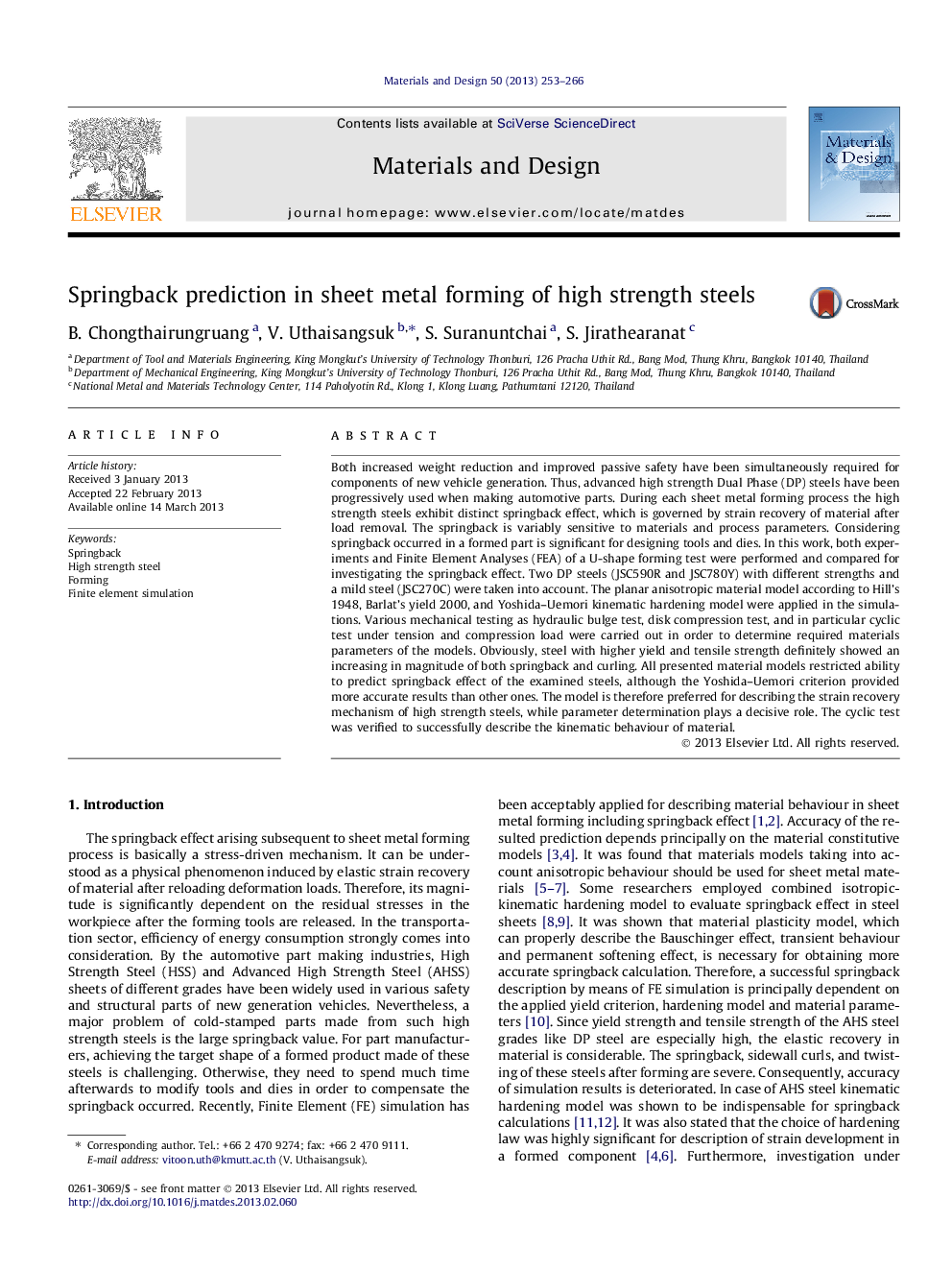| Article ID | Journal | Published Year | Pages | File Type |
|---|---|---|---|---|
| 829936 | Materials & Design (1980-2015) | 2013 | 14 Pages |
Both increased weight reduction and improved passive safety have been simultaneously required for components of new vehicle generation. Thus, advanced high strength Dual Phase (DP) steels have been progressively used when making automotive parts. During each sheet metal forming process the high strength steels exhibit distinct springback effect, which is governed by strain recovery of material after load removal. The springback is variably sensitive to materials and process parameters. Considering springback occurred in a formed part is significant for designing tools and dies. In this work, both experiments and Finite Element Analyses (FEA) of a U-shape forming test were performed and compared for investigating the springback effect. Two DP steels (JSC590R and JSC780Y) with different strengths and a mild steel (JSC270C) were taken into account. The planar anisotropic material model according to Hill’s 1948, Barlat’s yield 2000, and Yoshida–Uemori kinematic hardening model were applied in the simulations. Various mechanical testing as hydraulic bulge test, disk compression test, and in particular cyclic test under tension and compression load were carried out in order to determine required materials parameters of the models. Obviously, steel with higher yield and tensile strength definitely showed an increasing in magnitude of both springback and curling. All presented material models restricted ability to predict springback effect of the examined steels, although the Yoshida–Uemori criterion provided more accurate results than other ones. The model is therefore preferred for describing the strain recovery mechanism of high strength steels, while parameter determination plays a decisive role. The cyclic test was verified to successfully describe the kinematic behaviour of material.
► Study of springback effect of various steel grades by experiment and FE simulation. ► Cyclic tension-compression test was performed for kinematic hardening model. ► Yoshida-Uemori model provided the most precise springback and curl prediction. ► Conventional materials models can be sufficiently applied for mild steels. ► For industries, improved model and parameter determination method are still needed.
